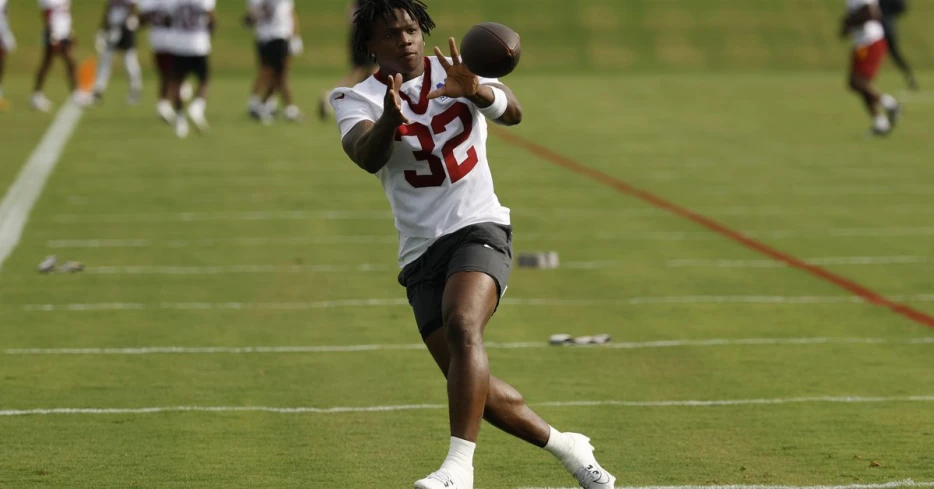
 Hogs Haven
Hogs Haven
Will Bill have an impact in his rookie season?
Bill Croskey-Merritt was drafted by the Washington Commanders in the 7th round of the 2025 NFL Draft. Since the selection, the former Arizona running back has received nothing but positive press for his vision, burst, and cut quickness. Draft Network discussed his skill set in a pre-draft profile:
He’s a scheme-versatile back who shows good patience behind the line of scrimmage to locate cutback lanes and follow his blockers when pulling into space. Croskey-Merritt looks to get downhill in a hurry when he can, and while his speed is more build-up than explosive, he hits it with authority when the gap is open. Behind the line, he finds second-level defenders quickly and manipulates with good intention, pressing gaps and popping to other ones to open space. He uses his peripheral vision well to find space to jump cut into when navigating the second level. Getting up to speed, he runs upright and exploits angles with micro-movements to make would-be tacklers turn into arm tackles so he can bounce off them.
Bill's 8.28 RAS score grades him with poor agility, but elite explosion and speed. Take special note of the 1.50 ten-yard split, which is a step slower than Bhayshul Tuten’s (1.49 sec) and just a shade faster than TreVeyon Henderson’s (1.52 sec). For another point of reference, Brian Robinson’s ten-yard split was 1.59 seconds.
In this article, we will look at three different run concepts commonly used by the Washington Commanders and how Bill’s skill set matches each one.
Like many teams, Kliff Kingsbury and Anthony Lynn employ several different run concepts, including both zone and gap schemes. Initially, I planned on offering a comparison of the two approaches, but I came across this write-up from Mile High Report. It does a far better job than I ever could, and if you have the time for a second cup of coffee, it is well worth the read. All the concepts discussed below are referenced in MHR’s article if you would like a more detailed explanation.
This play is a variation of the counter scheme. In the counter, the guard pulls and works to the opposite side of the line then executes a kick-out block on the edge defender. The GT counter variation involves both the guard and tackle pulling from the back side of the line. The guard executes the kick-out block, and the tackle follows behind to provide blocking on the second level. Gibbs Era fans will immediately recognize this play by the moniker “Counter Trey.”
The modern era GT Counter is a little different in Kliff Kingsbury’s offense, as it typically is run out of a shotgun or pistol formation, and there is no protection added to the back side of the line. This lack of protection is accounted for by the quarterback, who has several options based on how the uncovered end reacts. Kingsbury works with multiple variations of this concept when calling...